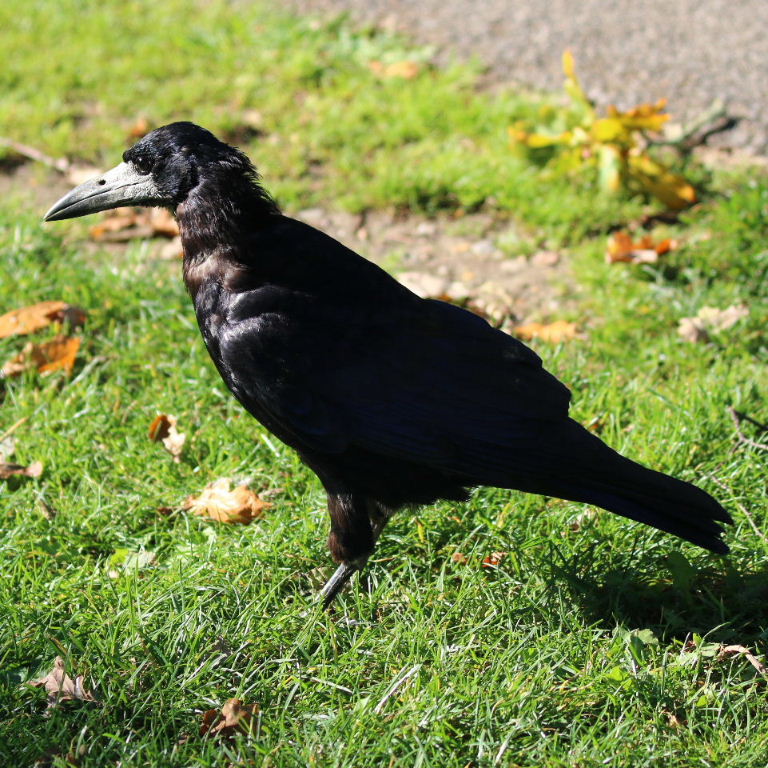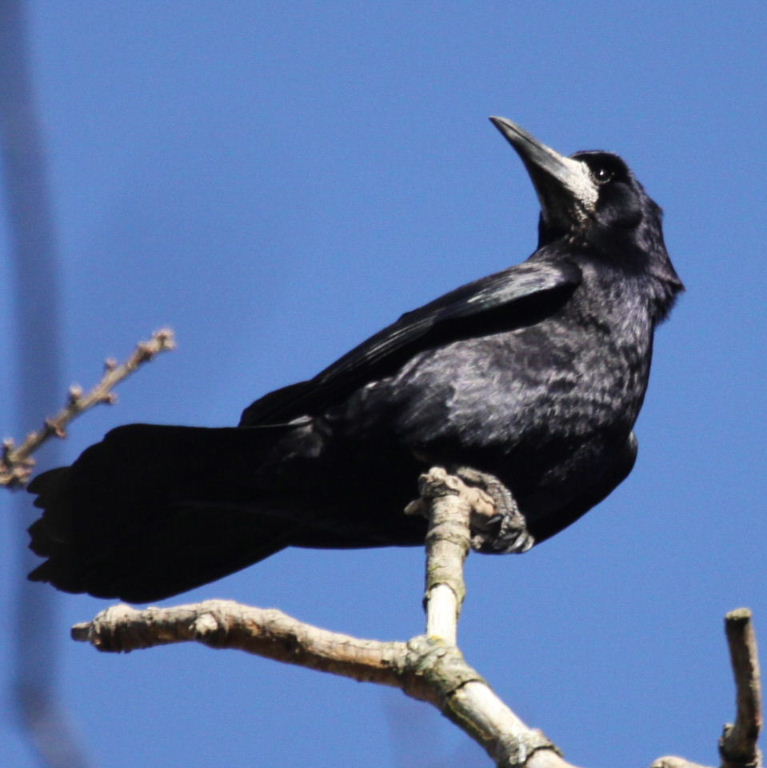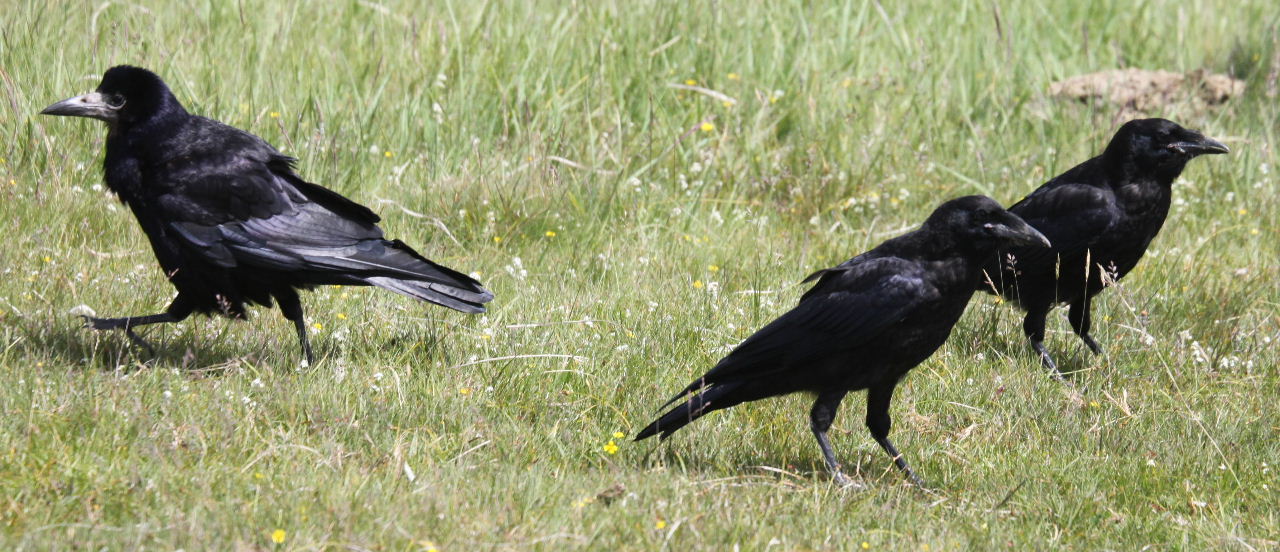Rook Corvus frugilegus


The Rook can be distinguished from the Carrion Crow by its large, light grey beak and barer face; it is also not
as sleek, often with shaggy feathers on its belly giving it an angular shape.



Typical bare grey beak and shaggy, angular shape. Some have an iridescent bluish or purple tinge.
The one above right has some brown feathers.



They are gregarious, found in flocks and roosting in rookeries, colonies of many nests in neighbouring trees.
It is native to much of temperate Eurasia.



Its corvid relative the Jay is well known for burying acorns for winter (and propagating oak trees).
Here a Rook is doing the same, collecting acorns from beneath a tree and burying them in a field.

Adult Rook (left) with bare grey beak and untidy, angular appearance and two young Rooks which look
like Crows with sleeker shape and feathered top of beak (which they lose later).
 Two young Rooks (like Crows) begging parent for food.
Two young Rooks (like Crows) begging parent for food.
 Icy morning.
Icy morning.
 Rook gathering nesting material.
Rook gathering nesting material.
 Rook size comparison with two Jackdaws: bigger bird and beak but smaller head.
Rook size comparison with two Jackdaws: bigger bird and beak but smaller head.
 Rooks and Jackdaw.
Rooks and Jackdaw.



